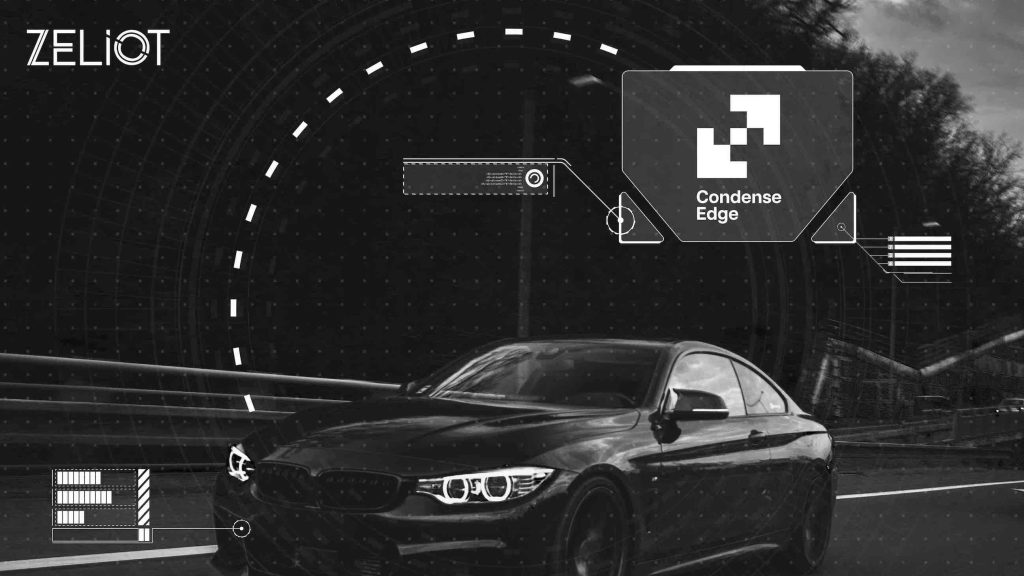Streamlining Automotive Ecosystem with Remote Diagnostic (FOTA) and Predictive Maintenance

The connected mobility ecosystem is constantly evolving, ensuring rapid growth of the
connected vehicle market in the upcoming years. According to an analysis from McKinsey, the
forecasted value of the software-driven automotive vehicles market is 50 billion dollars by 2030
at a CAGR of 9%.
But with growing technological advancements come complexities that lead to a rapid hike in
vehicle recall rates. According to Indian Automobile Manufacturers (SIAM), OEMs had to
voluntarily recall over 206,238 cars, SUVs, and two-wheelers vehicles in 2022 due to failures in
after-sale operations. Moreover, the recall data of connected automobiles due to software-related
issues was approximately 8073418 units from March 2022 to March 2023.
A Tabular Representation of Vehicle Recalls in 2022
| BMW India | 195 |
| Honda Motorcycle & Scooter India | 91 |
| Maruti Suzuki | 25,065 |
| Mercedes Benz India | 16,007 |
| Skoda Auto India | 76,988 |
| Suzuki Motorcycles India | 1,60,025 |
| Toyota Kirloskar Motor | 34 |
| Total | 2,78,405 |
The main components of these software-related problems in various ECUs of connected vehicles are brake, engine control module, vehicle control, backup camera, transmission, infotainment, etc. Let’s explore a few outcomes the OEMs have to face due to vehicle recalls.
Adverse Outcomes of Vehicle Recalls
- Immediate Cost Burden: Although these vehicle recalls can be of different types, such as voluntary, post-purchase customer complaints, and regulatory, they still impact the expenses of OEMs in one way or the other.
- Inevitable Damages to Customer Loyalty and Satisfaction: Another consequence of the hike in vehicle recall rates OEMs have to deal with is the inevitable damage to their customers’ loyalty and satisfaction. It’s more in the case of EVs than ICE vehicles, making them one of the prime reasons for the first decline in vehicle service satisfaction in over three decades. According to a study by J.D. Power, the customer service satisfaction score among EV owners was 42 points lower than ICE vehicle owners.
- Irreversible Loss in OEM’s Reputation & Brand Value: Vehicle recalls leave an irrevocable dent in the reputation and brand value of any OEM. As a result, it changes the customers’ perception of the automotive manufacturer, evoking trust issues related to the connected vehicles’ quality. Consequently, it leads to an immense loss in revenue and customer loyalty.
- Unprecedented lawsuits & fines by the Government: Another impact of the massively increasing vehicle recall rate is the immediately imposed fines by the governments of different countries. For instance, if any OEM encounters a vehicle recall situation in India, then they are subjected to a) reimburse the consumers for the entire vehicle cost; b) replacement of the defective part; c) pay fines as per the Central Government’s prescription.
Since the number of auto recalls is constantly increasing, it’s an opportunity for OEMs to streamline remote diagnostics and predictive maintenance abilities in their connected vehicles. In fact, the expected CAGR of the Global automotive remote diagnostics market is 16.9% between 2023 and 2030, according to Growth Market Reports.
Challenges Associated with Remote Diagnostics in the Current Mobility Ecosystem
Even though the global automotive remote diagnostics market is booming, fixing the vehicle recall issues for OEMs isn’t a smooth journey yet. But why is it so? Undeniably, it’s due to the challenges associated with remote diagnostics in the current mobility ecosystem.
- Obstacles in monitoring & resolving data anomalies at a scale:
Monitoring and responding to the data anomalies on the telematics channel of their vehicles in real time is essential for any OEM. Unfortunately, it’s an ongoing struggle for most OEMs. Reason? After launching the connected and automated vehicles in the market, they irresistibly go wrong while monitoring their components and complaints related to them from different locations in live mode. Hence, proactively resolving the defective vehicles or their parts remains a hurdle for OEMs.
- Complexity in analyzing the root cause of the fault:
Knowing the root cause of the malfunctioning of their vehicles can be a game-changer for OEMs. However, scrutinizing the root cause isn’t enough. Steps like countermeasure development and deployment are a bigger picture of the overall process. Accomplishing these tasks together as soon as possible is like a castle to achieve.
- Difficulty in tracking defective vehicles in a particular batch:
Several times, it has been observed that OEMs usually recall their entire batch of vehicles even if a few have faults. Imagine the amount of time and money they could save by identifying components that require a minor repair or a voluntary recall. Apparently, reaching this stage is still a milestone for most OEMs.
- Lack of Tangible ROI (Return on Investment)
Tangible Return-on-Investment for the Automotive OEMs/Enterprises on connected technology is limited. Implementing remote diagnostic and predictive maintenance solutions requires huge infrastructure expenditures in areas like software development, data management, server capacity, and communication networks that come at a high upfront cost. Moreover, the advantages of new technologies might not have immediate outcomes, making it challenging to defend the investment.
- No control over data to deliver real-time OTA updates in a Customized Way
Migrating apps on the cloud and then operating them requires strategic planning that is only possible by delivering real-time OTA updates in a customized way. And OEMs can only do it if they have more control over data related to OTA manifest schema and OTA feedback which is essential for managing the lifecycle events of a connected vehicle. Unfortunately, it’s an uphill battle for OEMs when it comes to handling real-time data streams at a scale.
- Risk of cyber-attacks leading to component malfunctioning:
Automotive Cyber security is one of the major concerns for OEMs and analysts today. So, it becomes essential for them to take immediate action whenever a threat occurs, and if they fail to do it, the monetary and reputation loss can be massive. Unconsented data sharing with third-party application providers is one of the reasons.
Cyber-attacks can potentially disrupt or disable the software that controls various components of a vehicle, leading to component malfunctioning and potentially putting the safety of the driver and passengers at risk.
Implementing proper network segmentation and deploying all the security measures to control unauthorized access to data can be a great start to prevent these cybersecurity-related issues in the automotive cloud. But is it enough? The answer is no.

Streamlined Remote Diagnostics & Predictive Maintenance: A Game Changer
When the existing autonomous vehicle ecosystem is too complicated to manage, it becomes the need of the hour to leverage unique attributes of connected vehicles at a scale. It’s only achievable by ensuring data accuracy and software intelligence in remote diagnostics and predictive maintenance abilities in connected vehicles. Enlisted below changes will shift the gears of the connected mobility environment:
- Selection of reliable and scalable components from the beginning that ensures the implementation of an effective predictive maintenance application
- Switching to cloud-to-edge technology that supports low-latency applications at incredible speeds
- Choosing one platform for all the updates, loggings, commands, and diagnostics that reduces multi-vendor integration dependency, complexity, and cost
- Establishment of an effective C2D communication network to manage the OTA manifest schema & OTA feedback mechanism without losing the integrity of the software and associated firmware
- Implementation of an authentication mechanism on the cloud for managing real-time data pipelines based on various user-level layers
- Configuring a low-memory footprint embedded firmware in vehicles that handles rich datasets from the TCU of the vehicles and their OTA updates in real-time
- Implementing advanced technology for the close integration of the edge and the cloud for analyzing various RUL estimator models in connected vehicles with accuracy
- Creating a resilient solution to ingest, store and analyze big data pipelines in real-time
- Adopting a BYOS (Bring Your Own Subscription) model, allowing OEMs to have their vehicle’s data on their cloud and further helping them to extend their existing data pipelines
Conclusion
Vehicle recalls are an anxiety for OEMs, no matter how huge the industry is. Consequently, it compels the need to integrate smart remote diagnosis features into vehicles, enabling their predictive maintenance abilities. Building a closed ecosystem between the edge and the cloud is one of the possibilities for doing it. OEMs can implement an authentication mechanism on the cloud for handling real-time data pipelines based on various user-level layers. As a result, it will allow the maintenance of the software integrity and associated firmware while managing the real-time data insights from connected vehicles at a scale. Besides that, it will reduce the attack surface in connected vehicles by including various proprietary data protocols and authentication mechanisms.
Zeliot At a Glance
Zeliot, a booming company founded in 2018, is taking charge of breaking the barriers in the connected mobility ecosystem. Our vision is to bring deep-tech software-managed applications to OEMs and Enterprises, allowing them to have more control over their data. We are making it possible with Condense and Condense Edge where the former is powering the latter.
About The Author
Sudeep Nayak is a co-founder and COO of Zeliot, a new-age deep tech company founded in 2018 with the vision of offering IoT platform-based solutions to enterprises and Automotive OEMs. Having expertise in domains like Machine Learning, Data Analytics, Connectivity Solutions, and Sales, he leads most of the techno-commercial discussions at Zeliot.


